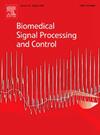Enhancing multiple sclerosis diagnosis and prognosis through a dual Patch-Wise CNN architecture
IF 4.9
2区 医学
Q1 ENGINEERING, BIOMEDICAL
引用次数: 0
Abstract
Multiple sclerosis (MS) is a complex neurological disorder that requires accurate early prediction and prognosis for timely intervention, which can be facilitated through the detection and tracking of lesion development from medical images. In medical image processing, traditional manual segmentation methods can be very time-consuming. To overcome these limitations, the present study introduces a novel dual 2D patch-wise parallel convolutional neural network (CNN) model designed to improve both lesion segmentation accuracy and the prediction of MS. In detail, the first CNN is dedicated to accurately segmenting lesions from MRI scans, while the second CNN reduces false positives, thereby increasing overall efficiency. Moreover, by integrating T1-w, T2-w, and FLAIR MRI sequences, the model achieves enhanced accuracy, adapting to variations across different MRI scanners. Following lesion identification, another CNN model to predict MS disease is developed, specifically tailored to MRI, and achieves an overall accuracy of 91% in the prediction of MS disease. The high accuracy, along with a precision of 87%, recall of 77%, and an F1 score of 80.5%, demonstrates the effectiveness of the proposed model as a robust tool for early diagnosis and prognosis in MS. The present dual CNN approach not only improves lesion segmentation but also provides clinicians with valuable insights into disease trajectory, offering a new dimension of predictive analysis for MS management.
通过双Patch-Wise CNN架构增强多发性硬化的诊断和预后
多发性硬化症(MS)是一种复杂的神经系统疾病,需要准确的早期预测和预后,以便及时干预,通过医学图像检测和跟踪病变发展可以促进这一点。在医学图像处理中,传统的人工分割方法非常耗时。为了克服这些限制,本研究引入了一种新型的双2D斑块并行卷积神经网络(CNN)模型,旨在提高病变分割精度和ms预测。具体而言,第一个CNN致力于准确分割MRI扫描的病变,而第二个CNN减少了假阳性,从而提高了整体效率。此外,通过整合T1-w、T2-w和FLAIR MRI序列,该模型实现了更高的准确性,适应不同MRI扫描仪的变化。病变识别后,我们开发了另一种预测多发性硬化症的CNN模型,专门针对MRI,预测多发性硬化症的总体准确率达到91%。准确率高达87%,召回率为77%,F1评分为80.5%,证明了该模型作为MS早期诊断和预后的强大工具的有效性。目前的双CNN方法不仅改善了病变分割,还为临床医生提供了对疾病轨迹的宝贵见解,为MS管理提供了一个新的预测分析维度。
本文章由计算机程序翻译,如有差异,请以英文原文为准。
求助全文
约1分钟内获得全文
求助全文
来源期刊

Biomedical Signal Processing and Control
工程技术-工程:生物医学
CiteScore
9.80
自引率
13.70%
发文量
822
审稿时长
4 months
期刊介绍:
Biomedical Signal Processing and Control aims to provide a cross-disciplinary international forum for the interchange of information on research in the measurement and analysis of signals and images in clinical medicine and the biological sciences. Emphasis is placed on contributions dealing with the practical, applications-led research on the use of methods and devices in clinical diagnosis, patient monitoring and management.
Biomedical Signal Processing and Control reflects the main areas in which these methods are being used and developed at the interface of both engineering and clinical science. The scope of the journal is defined to include relevant review papers, technical notes, short communications and letters. Tutorial papers and special issues will also be published.
 求助内容:
求助内容: 应助结果提醒方式:
应助结果提醒方式:


